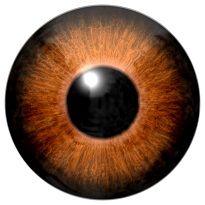Aflibercept Outperforms Ranibizumab in Cases of Serous Pigment Epithelium Detachment from Neovascular AMD
An optical coherence tomography study found that, after three monthly treatments,aAflibercept was 7 times more effective than ranibizumab in resolving serous pigment epithelium detachment, though neither treatment improved visual acuity in these patients to a statistically significant degree.

A team of researchers at the Department of Ophthalmology at A University Hospital in Busan, South Korea, studied 63 patients with neovascular age-related macular degeneration (nAMD) to assess the differences in optical coherence tomography (OCT) findings between patients treated with aflibercept and those treated with ranibizumab.
These treatment-naïve patients received an intravitreal injection of aflibercept or ranibizumab once monthly for 3 months. For each treatment group, the team compared findings during baseline OCT with OCT findings after treatment. The team published the results of their study in a special issue of Acta Ophthalmologica containing abstracts of the 2016 European Association for Vision and Eye Research Conference.
- OCT findings of interest included the following:
- Serous pigment epithelium detachment
- Fibrovascular pigment epithelium detachment
- Subretinal fluid
- Intraretinal fluid
- Dense zone of the outer retina
- Classic neovascularization
- Hyper-reflective dots.
The team also compared baseline and post-treatment values between the two treatment groups with respect to the following:
- Best corrected visual acuity (BCVA)
- Inner segment/outer segment (IS/OS) length
- External limiting membrane (ELM) length
- Central foveal thickness
The team noted no statistically significant differences between the two groups before treatment. However, after treatment, a significant difference in the rate of disappearance of serous pigment epithelium detachment was found between the aflibercept group and the ranibizumab group (36% vs. 5%, respectively, P = 0.02).
The team found no significant differences between treatment groups in changes from before treatment to after treatment in other OCT findings or in BCVA.
These findings led the team to conclude that aflibercept might be more effective than ranibizumab specifically for the treatment of nAMD patients with serous pigment epithelium detachment.
In addition, because they found no statistically significant improvement in visual acuity after either treatment in patients with serous pigment detachment in this study, they recommended further study of the relation between visual acuity and improvement in serous pigment detachment.
Related Coverage:
End-Stage Renal Disease Elevates Risk of Macular Degeneration
In Neovascular Age-Related Macular Degeneration, Lucentis and Eylea Yield Similar Injection Burden